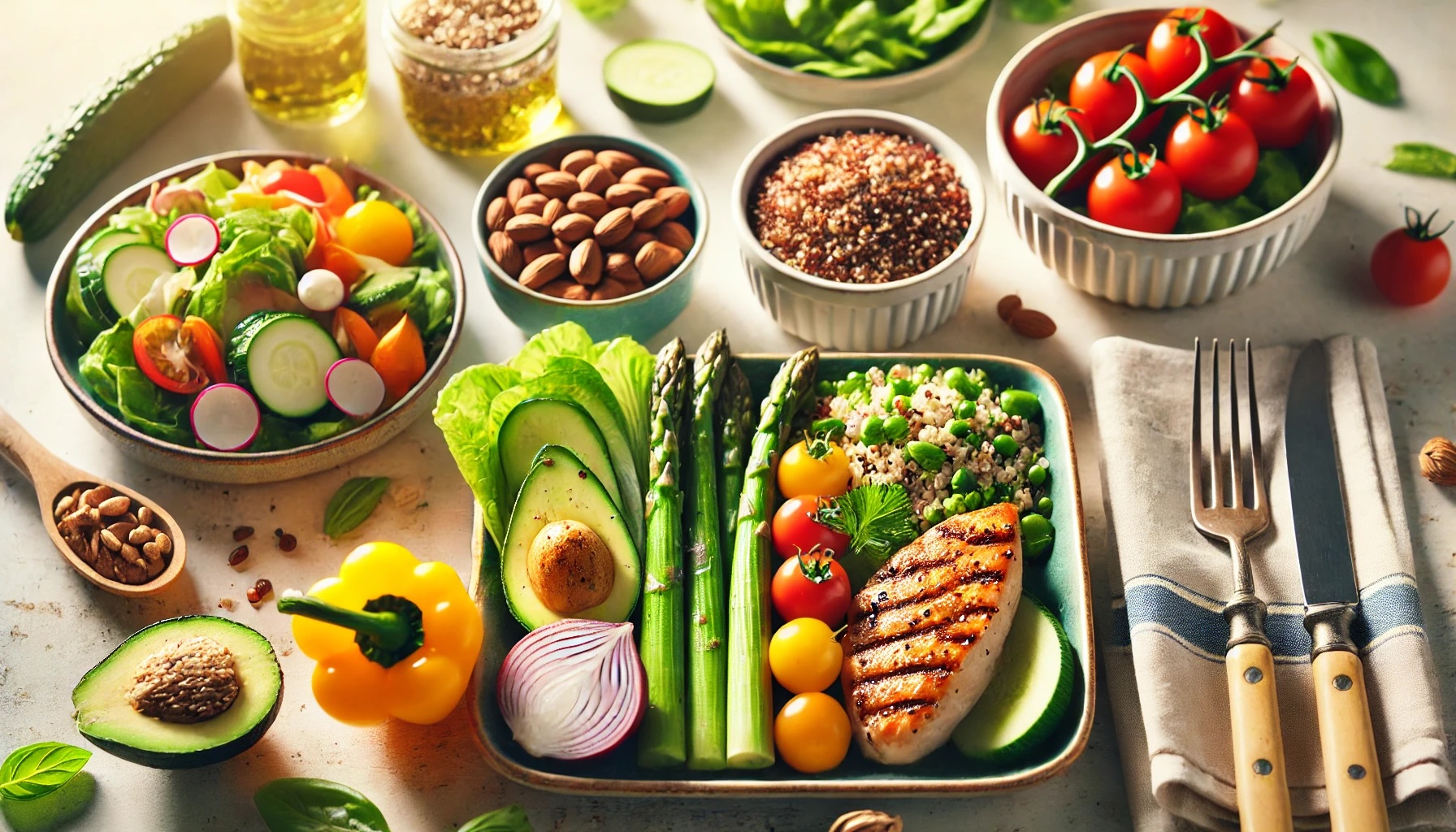In today’s fast-paced world, pursuing a healthy diet has become a goal for many. However, balancing nutrition and taste often poses a challenge. Nutrition and deliciousness are not mutually exclusive; they can coexist through proper dietary planning and creative cooking techniques. This comprehensive guide will help you bridge the gap between “health and flavor,” ensuring a sustainable and enjoyable eating habit.
1. Why Is Balancing Nutrition and Taste Important?
The essence of healthy eating is to meet the body’s nutritional needs while providing a pleasurable culinary experience. Achieving this balance is crucial for establishing a sustainable diet.
First, balanced nutrition is vital for maintaining physical health. Sufficient intake of proteins, carbohydrates, fats, vitamins, and minerals is essential for optimal bodily functions, immune support, and overall energy levels. A diet lacking nutrition can lead to fatigue, increased disease risk, and poor mental health.
Second, delicious food brings psychological satisfaction. The joy of eating can help reduce stress and elevate happiness. Many people struggle to maintain a healthy diet because traditional health foods are often perceived as less appealing.
By designing a thoughtful diet, you can meet your body’s needs while enjoying the pleasure of flavorful meals.
2. Fundamental Principles of Balanced Nutrition
A varied diet is the foundation of balanced nutrition. A diverse selection of foods ensures that you obtain all the necessary nutrients while reducing the risk of overconsuming certain substances. Incorporating high-quality protein, healthy fats, low-GI carbohydrates, and vitamin-rich ingredients can create a well-rounded meal.
Caloric control is another crucial aspect of balanced nutrition. Calculating your daily caloric needs and distributing them wisely helps prevent both overconsumption and nutrient deficiencies. Individual caloric requirements vary based on age, gender, body type, and activity level, so adjustments should be made accordingly.
Proper proportioning is also key. For instance, a balanced meal could allocate 25% to staple foods, 25% to protein sources, and 50% to fruits and vegetables. This proportion helps optimize nutrient intake while minimizing the proportion of high-calorie, high-fat foods.
3. How to Make Healthy Ingredients Taste Delicious
Creative cooking techniques are the key to transforming healthy ingredients into delicious dishes. Different cooking methods significantly affect the flavor and texture of food. For instance, low-temperature cooking preserves the natural taste of ingredients, while steaming and stewing enhance the sweetness and tenderness of vegetables.
Enhancing the visual appeal of food can significantly improve the dining experience. Studies have shown that colorful foods are more appetizing. Including red tomatoes, green broccoli, and yellow carrots in your dishes not only boosts nutritional value but also makes meals visually attractive.
Adding “finishing touches” to healthy ingredients can also elevate their flavor. For example, sprinkling toasted nuts on a salad adds crunch and enhances taste. Replacing traditional salad dressings with avocado spread provides a creamy texture and healthy fats.
4. Daily Healthy Meal Suggestions
Healthy eating should be reflected in every meal, including breakfast, lunch, dinner, and snacks. Below are some practical suggestions for daily meal combinations:
Breakfast: Combine nutrition and flavor with oatmeal topped with fruits such as blueberries and bananas, along with a handful of nuts. Add a touch of cinnamon or honey for enhanced taste.
Lunch: A balanced lunch could include grilled chicken paired with quinoa salad. Add cucumbers, cherry tomatoes, spinach, and olive oil vinaigrette. Roasted sweet potato chunks or low-fat cheese can enhance the flavor.
Dinner: A nutritious dinner might feature salmon with garlic broccoli and brown rice. Lemon slices and black pepper can add a refreshing aroma to the salmon while reducing greasiness.
Healthy Snacks: A fruit platter is an excellent snack option, while homemade energy balls—made with oats, peanut butter, honey, and dried fruits—are ideal for fitness enthusiasts.
5. Avoid Common Dietary Mistakes
Many people encounter pitfalls when trying to adopt a healthy diet. For example, over-reliance on processed foods can lead to excessive sugar, salt, and additive consumption. Opting for fresh ingredients instead can provide higher nutritional value and avoid unnecessary health risks.
Extreme diets, such as single-food meal plans, might yield short-term results but can cause nutritional imbalances in the long run. Healthy eating emphasizes diversity and balance rather than focusing solely on one food type.
Overconsumption of healthy foods is another common issue. While nuts and avocados are nutritious, consuming them in large quantities can increase calorie intake. Moderation is essential, with recommended servings such as a handful of nuts per day.
6. Technology-Assisted Healthy Eating
Advancements in technology provide greater convenience for healthy eating. For instance, food tracking apps can help users record daily calorie intake and nutrient distribution, enabling better dietary planning. Smart kitchen appliances, such as air fryers and sous-vide machines, preserve nutrients while making cooking more efficient.
Social media platforms also offer a wealth of creative recipes and dietary inspiration, making it easier to prepare healthy and flavorful meals at home.
7. Long-Term Strategies for Balancing Nutrition and Taste
Sustaining a healthy diet requires planning and patience. Creating a weekly meal plan is an effective strategy to avoid unhealthy food choices during busy times. Additionally, allowing occasional indulgences—such as a favorite high-calorie food once a week—helps maintain a sense of balance.
Continuously learning about nutrition can enhance your understanding of how food impacts health, enabling you to make more informed dietary decisions.
Conclusion
Healthy eating does not mean sacrificing deliciousness. Through thoughtful ingredient selection, effective cooking techniques, and creative meal combinations, you can achieve a balance between nutrition and taste in every meal. Whether your goal is to improve physical health or enjoy the pleasures of life, healthy eating can be a delightful journey. Take the first step today and start crafting a healthy eating lifestyle that’s both nourishing and enjoyable!



















